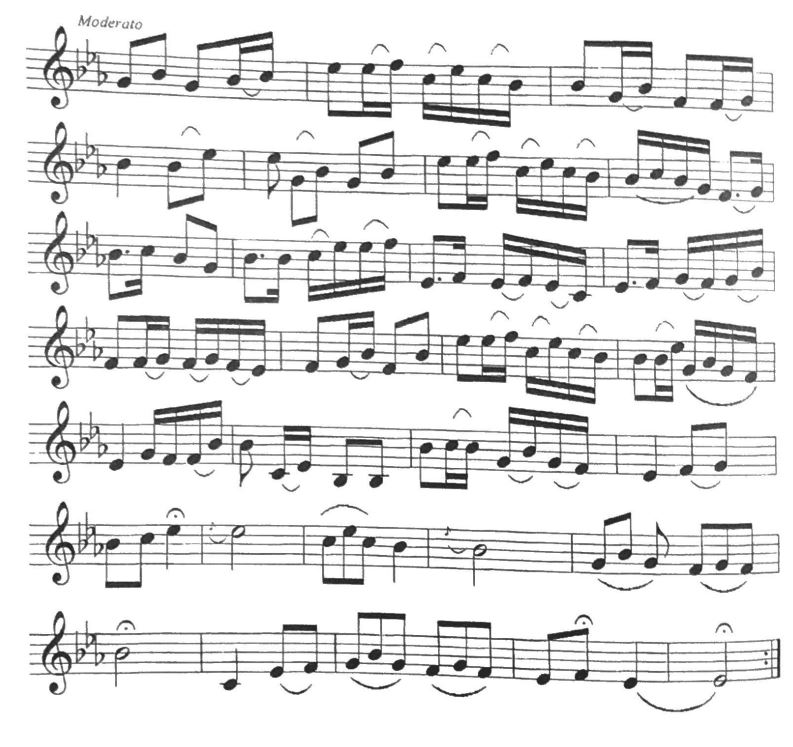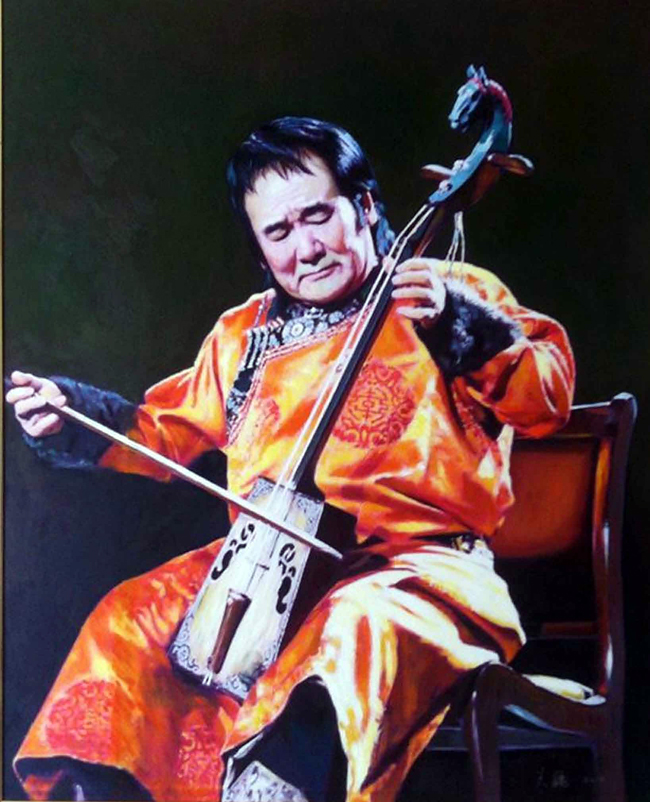How the Morin Khuur sounds “and how well you play it” depends very much on how you sit and how you touch the instrument. It is very important how you place the instrument. You need to be relaxed, with your arms and hands in the right position, smooth finger movements, with correct posture “all generally called position:
1.1 Sitting Position
1.2 Right hand/ arm position
1.3Left hand/ arm position
1.1 Sitting Position
To play the Morin Khuur, your body must be relaxed, but not leaning against the back of the chair. Sit on the front one-third of the chair. Push your left foot forward a little, pointing slightly left. Keep your right foot pointing forward. Keep your back straight. Place the body Morin Khuur between the knees, neck leaning a little towards to left.
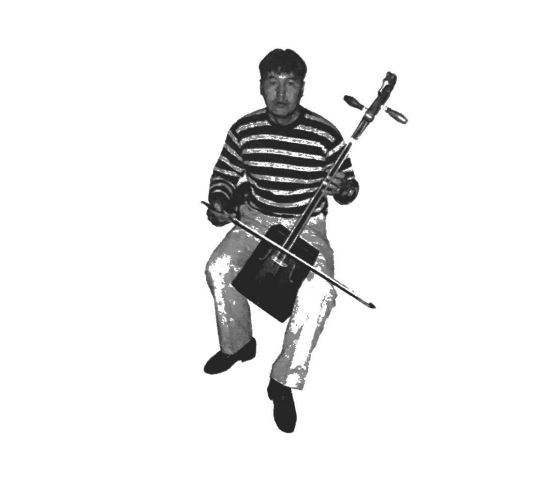
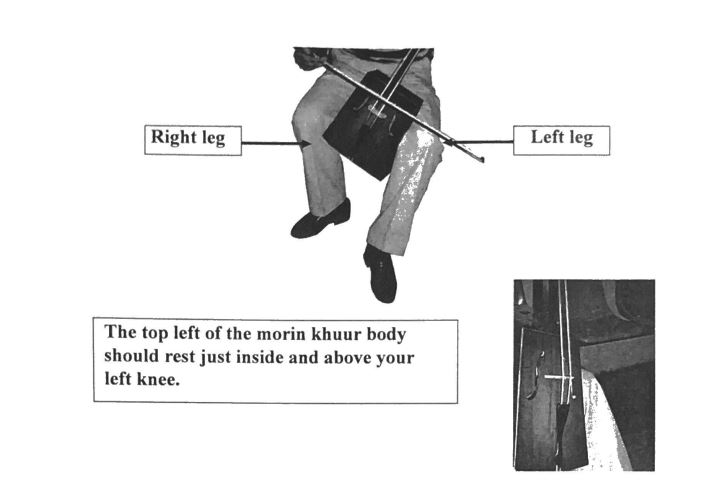
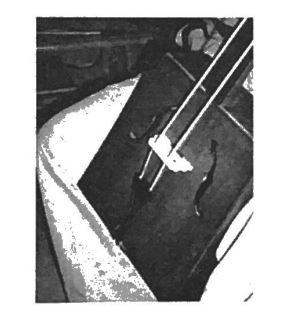
The bottom right corner of the Morin Khuur body should be resting just inside the right knee, on the top of the calf muscle. The neck of the Morin Khuur should be leaning left at a little less than 45 degrees.
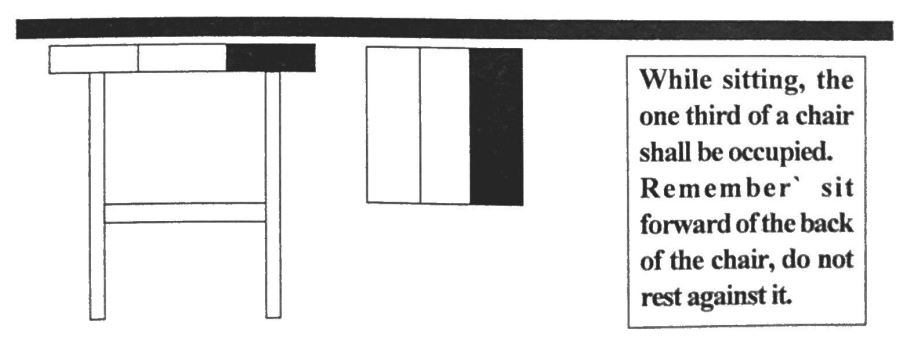
1.2 Position of the right hand/arm
The position of the right hand/arm affects the bow, shoulder, elbow and the movement of the forearm. The correct position of the bow and a good sound depend on the right hand/arm position. The right arm controls the expression and strength of the bow action, and is the deciding factor for how hard the bow presses on the morin khuur strings.
The fingers of the right hand need to contact both the bow and the bowstring. Note that the number of hairs in the bowstring is very similar to the number on the morin khuur. The resistance between the strings in the morin khuur and the bow is quite high, and you will need to hold the bow quite firmly.
Moving the bow involves two actions: pulling and pushing. The positions for the right forearm, shoulder and elbow depend on a number of factors. The movements of the forearm are important in controlling the speed and force of the bow, central to the sound of the morin khuur. These illustrations show alternative ways of holding the bow choose which one you want to use!

1.3 Position of the left hand/arm
The left hand has a variety of functions in playing the morin khuur. The fingers should be hooked and not at right angles to the strings. The neck of the morin khuur should rest against the web between the thumb and index finger.
With the forearm drawn back a little, the strings should be contacted by the nails of the 1st and 2nd fingers and the tips of the 3rd and 4th fingers (in certain special cases, the tips of all fingers). Note especially – when the 4th finger is used on the thinner string, it passes UNDER the thicker string!
The positioning of the fingers and their changes in position are crucial. This transfer involves the position of the fingers, hand, elbow and shoulder. The forearm adds weight to the finger on the string, and the elbow should be held up and away from the body. The forearm is important in left hand positioning, especially for playing at the top of the morin khuur.
The sensitivity of the left fingers is as important as that of the ears for the quality of the music.
Illustrated:
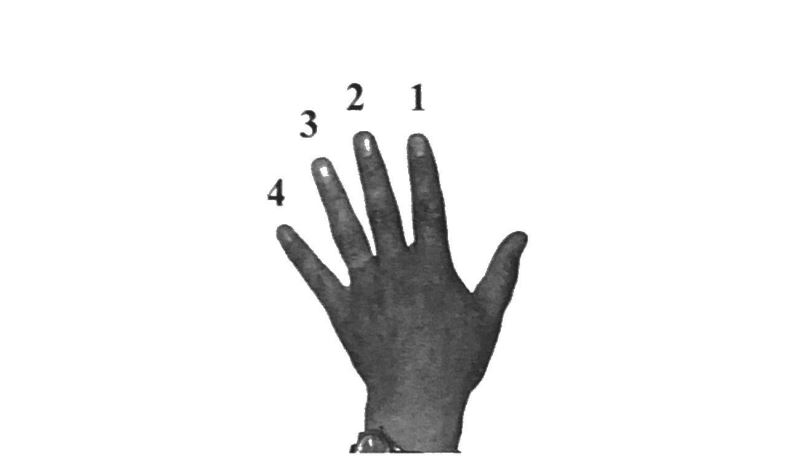
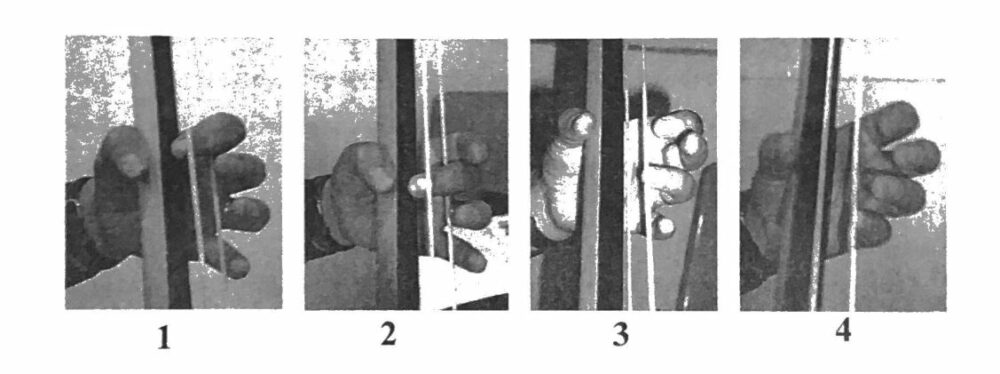
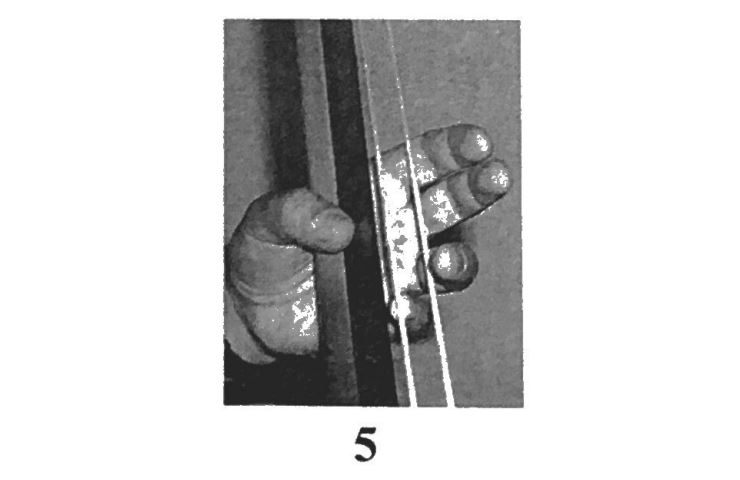
- 1st finger position ‘use the fingernail.
- 2nd finger position ‘use the fingernail.
- 3rd finger position ‘use the tip.
- 4th finger position ‘use the tip.
- 5th finger position ‘use the tip(NB little finger passes UNDER the thin string!).
On the left hand placement, the fingers should be sensitive to sound of the music and shall play important role in real pleasant sound of that particular song or music. Therefore the sensitivity of the fingers has same vital role as ears, which control the quality of music.
Sap of Strings
Feeding the Strings
Like every stringed musical instrument, resin must be applied to lubricate the string and keep them in good shape. It is important to use only the right amount of resin; too much or too little negatively affects the sound of the instrument. The right amount to be used is something you have to learn by experience.
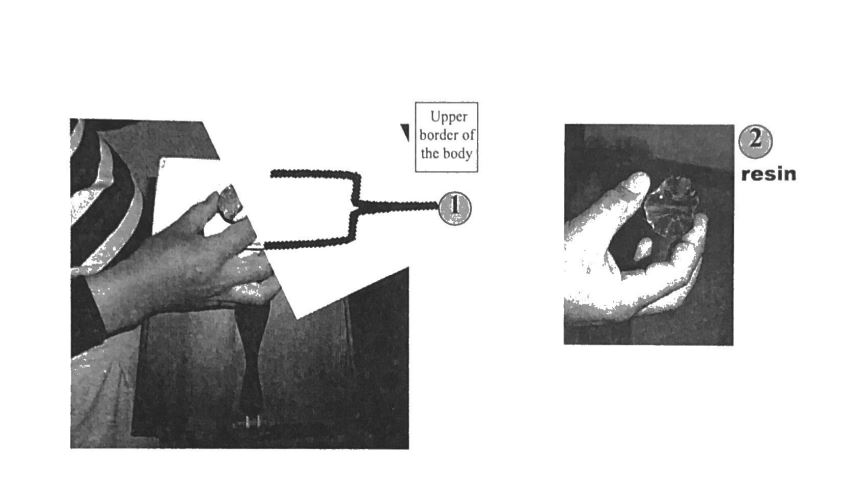
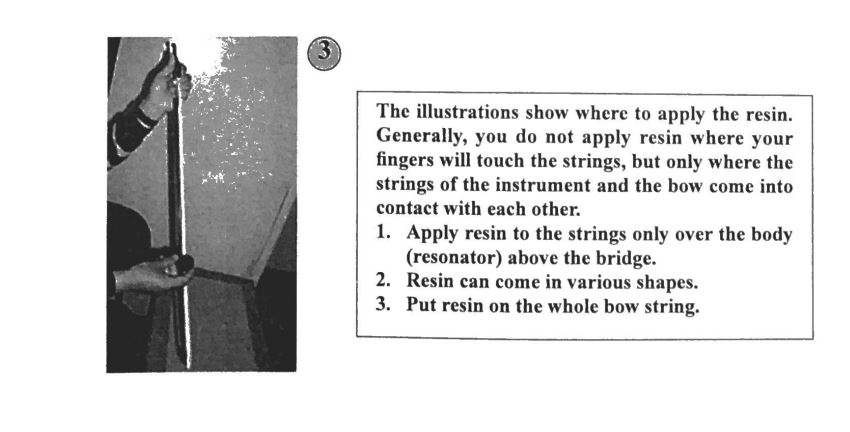
Tune of Morin Khuur
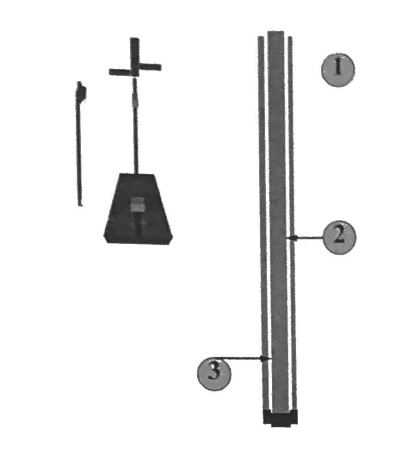
- Neck
- Thicker String
- Thinner String
Remember: the thinner string will be uppermost when you are holding the morin khuur ready to play.
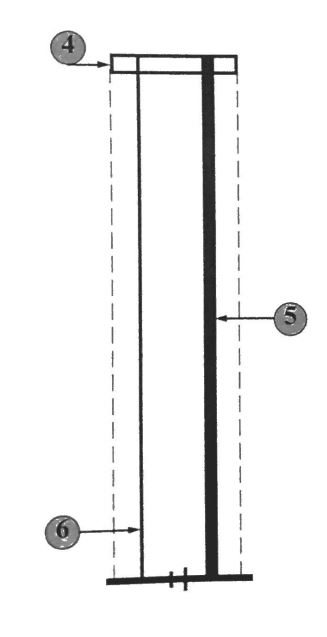
The string of the Morin Khuur are tuned to Bb(an octave and a tone below middle C) and F(an octave and a fifth below middle C). If that sounds complicated, it probably is! But don’t worry. Generally, concert pitch is irrelevant. Mongolia has one of the lowest population densities in the world. The nomadic people are almost always isolated from each other. There is usually only one Morin Khuur in the area.
So it is usually unnecessary for it to be in concert tuning: there is usually no other instrument around for it to be in tune with! So as long as the two strings are properly in tune with each other – that is normally the only “right” tuning!
- 4. Nut
- 5. Thicker String
- 6. Thinner String
Tune of Morin Khuur in Octave
An octave is a collection of 8 notes in a scale. In the Mongolian musical notation system, there are 9 octaves.
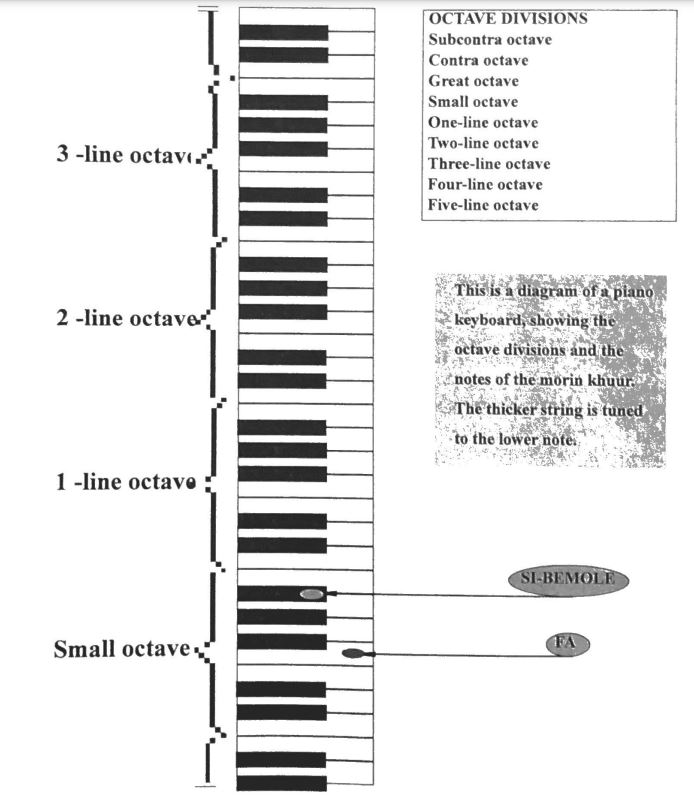
The Neck of the Morin Khuur
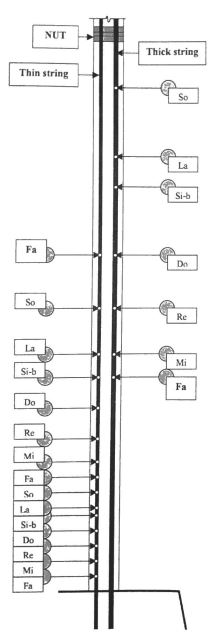
The Morin Khuur produces a wide range of rich sounds, and this illustration shows the main positions for the fingers to produce the notes. There can be no exact guide as to where your fingers should be, as the size of each morin khuur varies, and the position varies with the instrument size. You simply need to get to know your own instrument! We here show three octaves, from the Small Octave Fa (Ab) to the Third Octave Fa. Before practicing the fingering for different notes and the scale, keep working on bowing the open string. Also keep practicing playing both open strings at the same time, evenly.
The Major Scale – Thick String
Moving the finger from one position to another smoothly and with certainty is the purpose of the following exercise- playing the scale on the thicker string.
It is important to remember that when changing from one note to another, the notes must remain distinct from each other. Do not slide from one into another without a break in sound. But you must move the fingers smoothly. Use the thumb on the morin khuur neck as a counter-force to the finger positions. The fingers should relax pressure but remain in contact with the strings as they move from position to position.

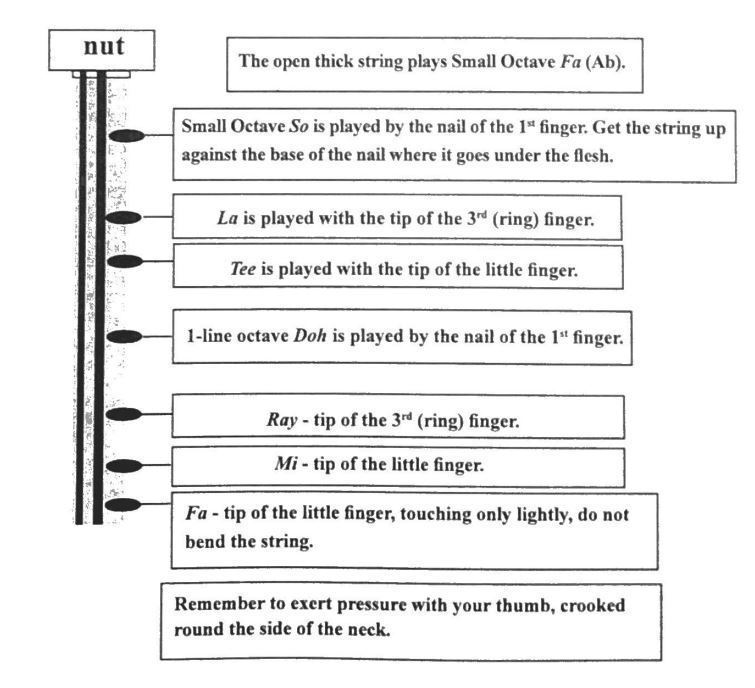
Thin String
The previous page described playing Small Octave Fa major to 1-line Fa major.
Now try the notes from 1-line octave So to 3-line octave Fa. This is on the THIN STRING, starting a little lower than where you ended on the thick string – NOT near the nut! Notice the position (marked) of the previous note you played – Fa – on the thick string. Remember the little finger goes UNDER the thick string!
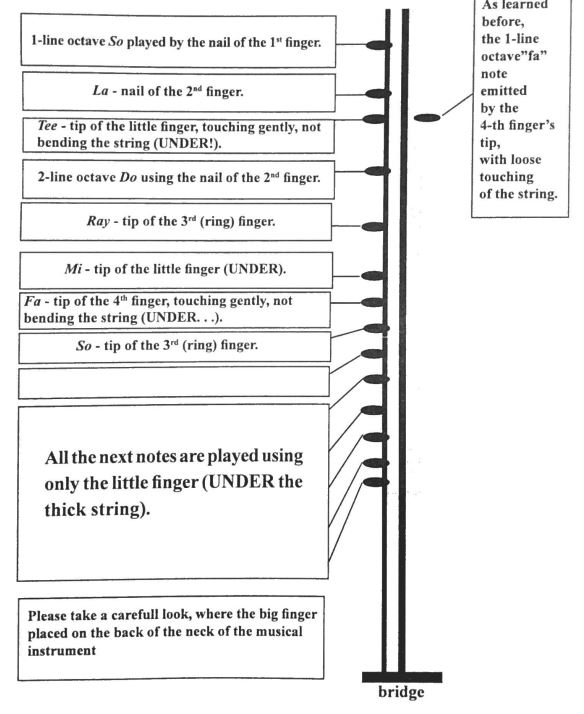
Location of Other Notes on the Neck of Morin Khuur
The last two pages have explained how to play three octaves, which fingers to use and their proper positioning. This section gives more fingering, but this set of fingering is generally only for more experienced players- you can skip this page for now and come back to it when you are expert!
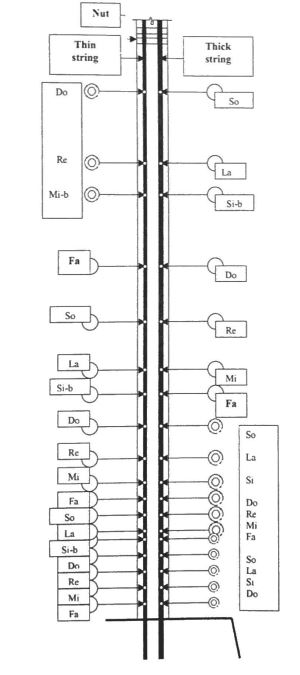
The notes that have already been shown you are marked with the single circle. The new notes are marked by a double circle (one inside the other).
You have learned the Fa major scale. Now we offer the minor scale.
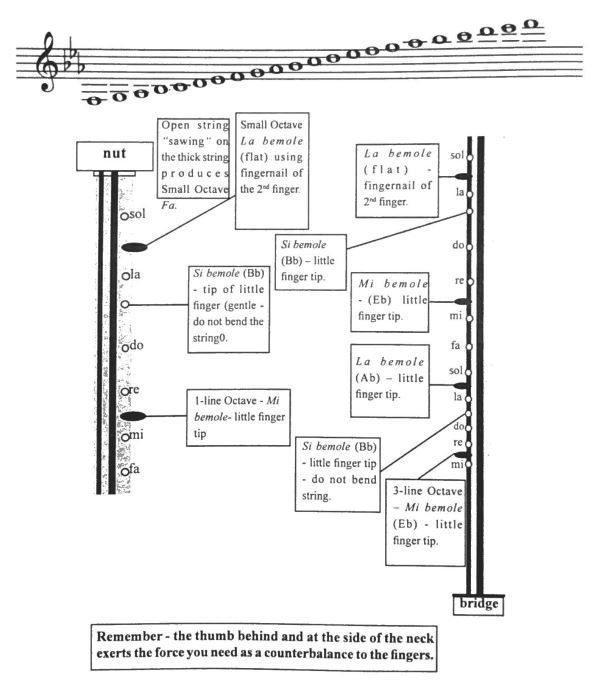
Most ordinary morin khuur players restrict themselves mostly to the 1st and 2nd Octaves. This calls for use of all the fingers without great difficulty. The 3rd Octave is more difficult. Because it is high up on the neck of the morin khuur, the distance between each note is very small, exact placement becomes critical and slight mistakes are much more obvious – and painful to the ear! The fingers must go under the thick string to reach the thin string for the 3rd Octave.
Doh is played by the nail of the 2nd finger.
Re is played with the tip of the 3rd finger.
Mi and all the next notes are played by the tip of the little finger.
In the further, you should learn to play with the thumb. One of the traditional methods of playing morin khuur is playing “ZEE” position with the thumb. The thumb pushing the thin string plays the role in sound lowering and highering of the thin string and making multiple sound of various ornamentation and rhythm.
For example: This position of pushing the 1-line octave “Fa” note by the thumb and the little finger in the center of the morin khuur neck.

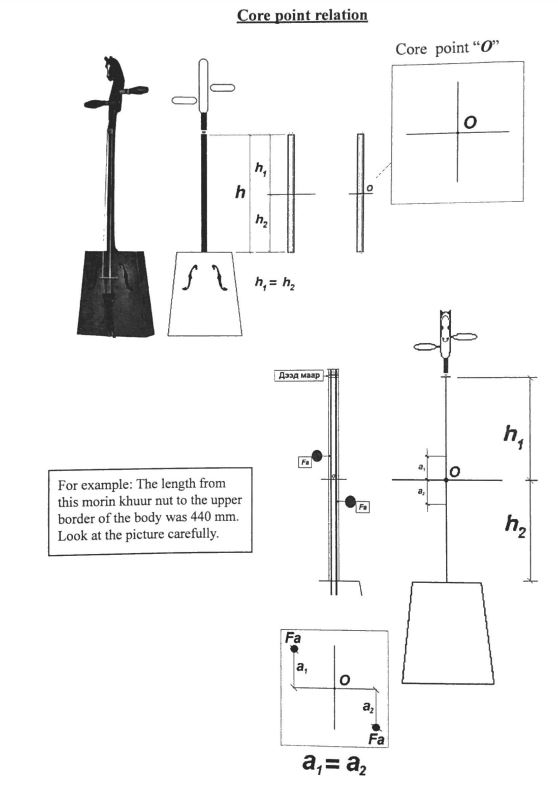
Vibrato
Many players believe the music becomes more alive and moving if vibrato is added. This is a matter of personal choice – you may add vibrato where and as often as you wish, as it places your ear.
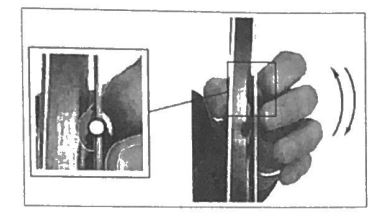
Finger presses the string for the proper note. To cause vibrato, quickly move your forearm, which in turn will cause the finger to move slightly off and back onto the note.
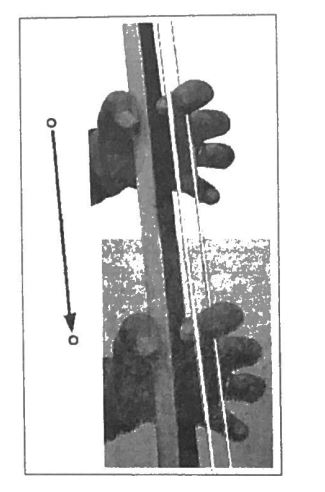
Glissando
This is also commonly called sliding. It is used to move from one note to the next so that the note is continuous, and the two notes are not separated by a silence. This can be an effective way to ‘ornament’ the tune.. It can also beplayed with rapid repetition.
Note the same finger is used.
Ornamentation
This is another way in which some players feel they can add interest and life to a musical piece. It consists of playing a note and the rapidly adding and removing a note above it using another finger. Again, the use of this technique is entirely optional, part of individual style, and can be used or not, as you choose, in any tune.
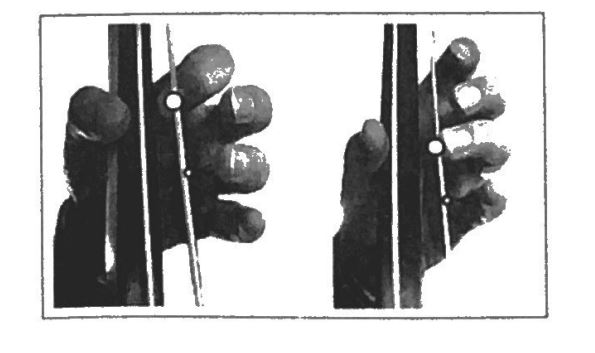
Wrapping and Tightening the String to the Pegs
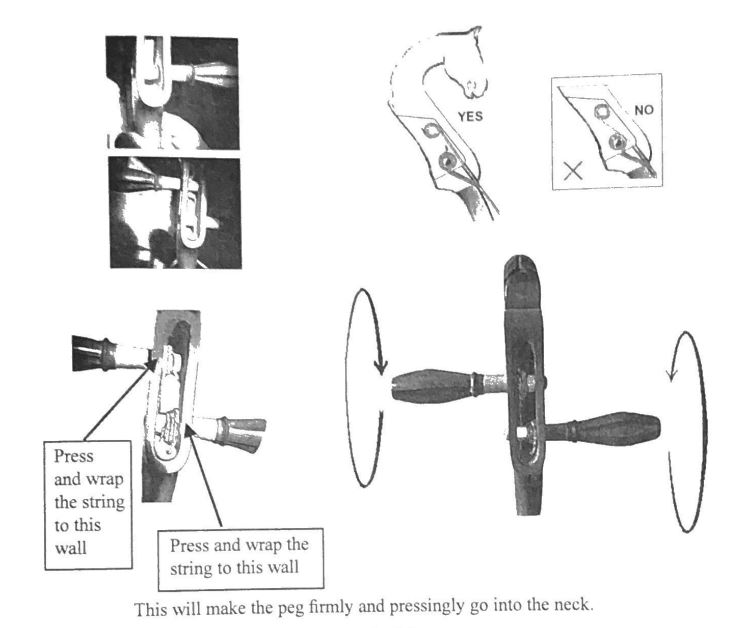
Replace the Bridge
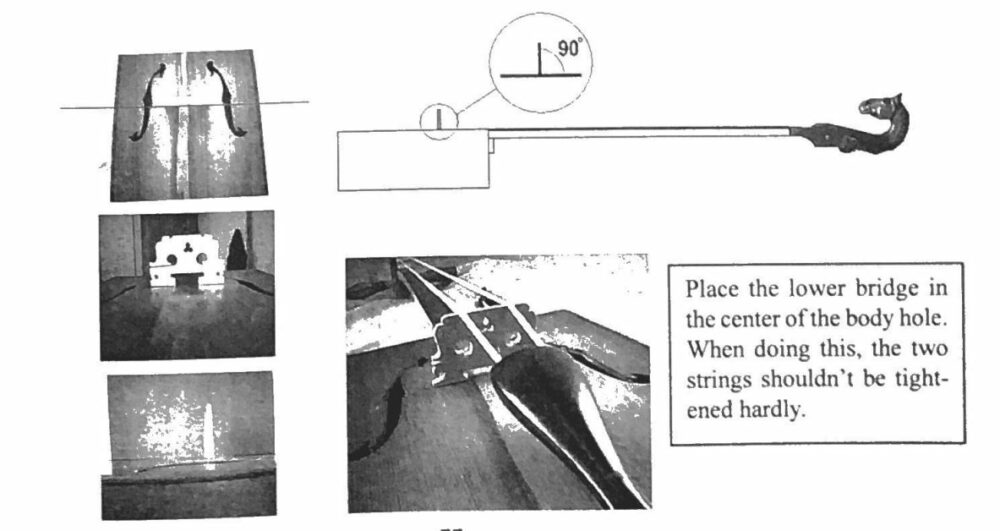
The Exercises
1. The First exercise for a Morin Khuur learner is with the right hand. It aims to teach use of the middle of the bow, the tip section and “sawing” with the frog end.
2. The Second exercise is meant to teach the involvement of the arms. It involves “sawing” with the whole bow, “sawing” with the frog end and the tip of the bow and various note placement.
3. The Third exercises involves transfer of finger position on the strings. It is meant to teach flexible and free movement of the fingers on the strings.
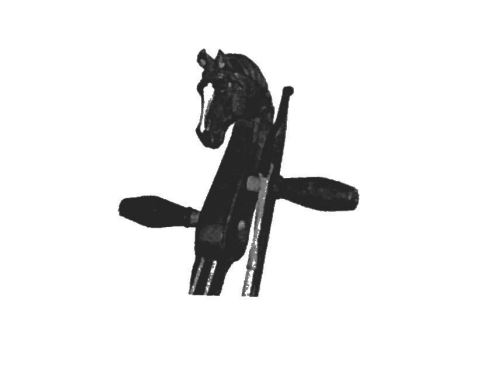
Producing a note on the Morin Khuur
The morin khuur is a bowed string instrument. The sound is produced by drawing the bow
across the morin khuur string (bowing). The sound is affected in two ways:
1. The action of the bow on the string.
2. The combination of movement of both hands.
The instrument makes the best note when there is a balance between the force used in pushing on or touching the string with finger or fingernail, and the force used in bowing. Learners need to practice exercises which involve such variations as even and sloping bowing, strong and softer bowing, bowing length and speed, bow speed variation, position of the bow on the morin khuur and use of soft, hard, smooth, loud, rough and sudden sounds. The learner must learn how to take total control over the bow. The sound produced must be “clean” and pure, not scraping and painful to the ear!
Placement, speed and force of bowing are core to the production of pleasant and rich sounds on the morin khuur.
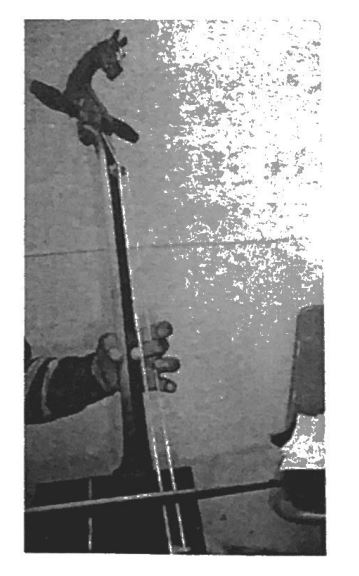
The balance between the force of pushing by the end of the fingers or by the nails on the string and the force of pressing by the stick.
The finger is shown pushing the string from left to right (as the player sees it). The opposing forces are a) the thumb and web between the thumb and index finger, and b) the fingernail.
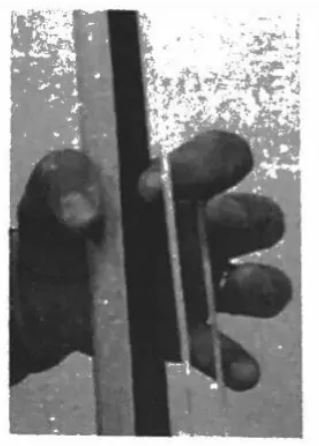
Same picture from the side. The thumb provides an opposing force to the fingers, and is important in managing the strength, speed, accuracy and variation of finger placement.
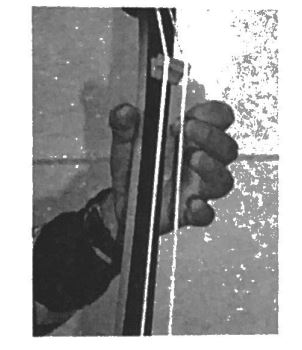
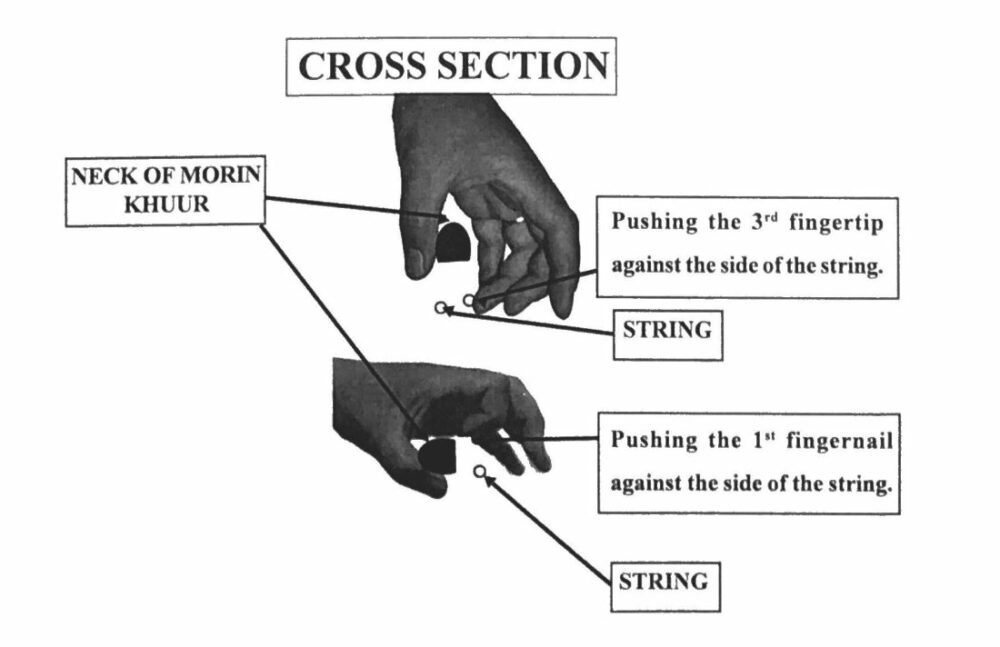
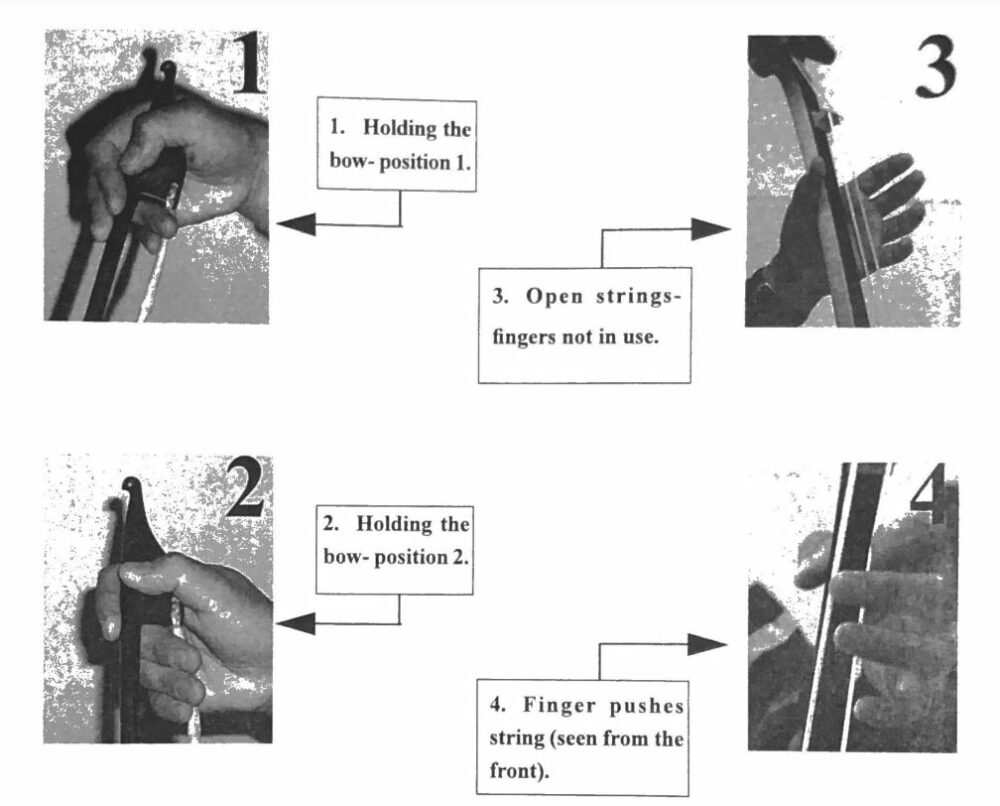
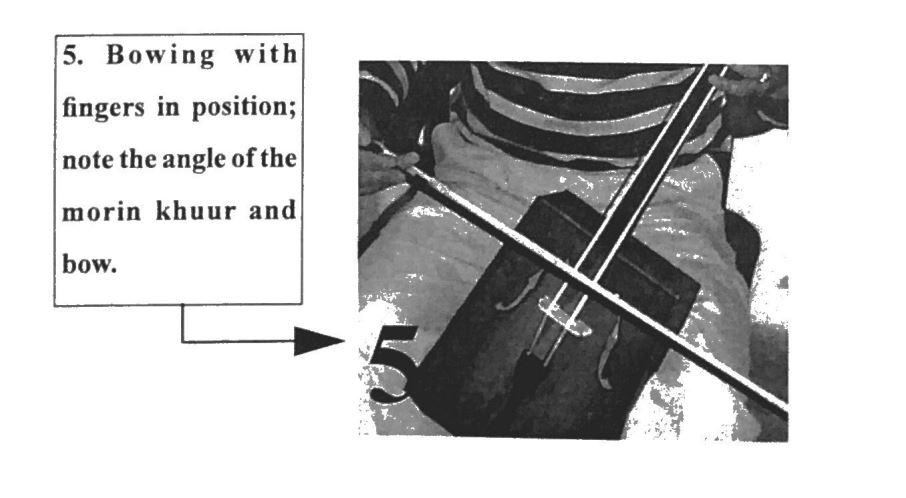
The first exercises to learn how to make an even note on either or both strings. Keep practicing until you can produce the note at every attempt!
A means to pull the bow.
V means to push the bow.

The bow should be kept at a 90 degree angle to the two strings, and should follow a straight line.
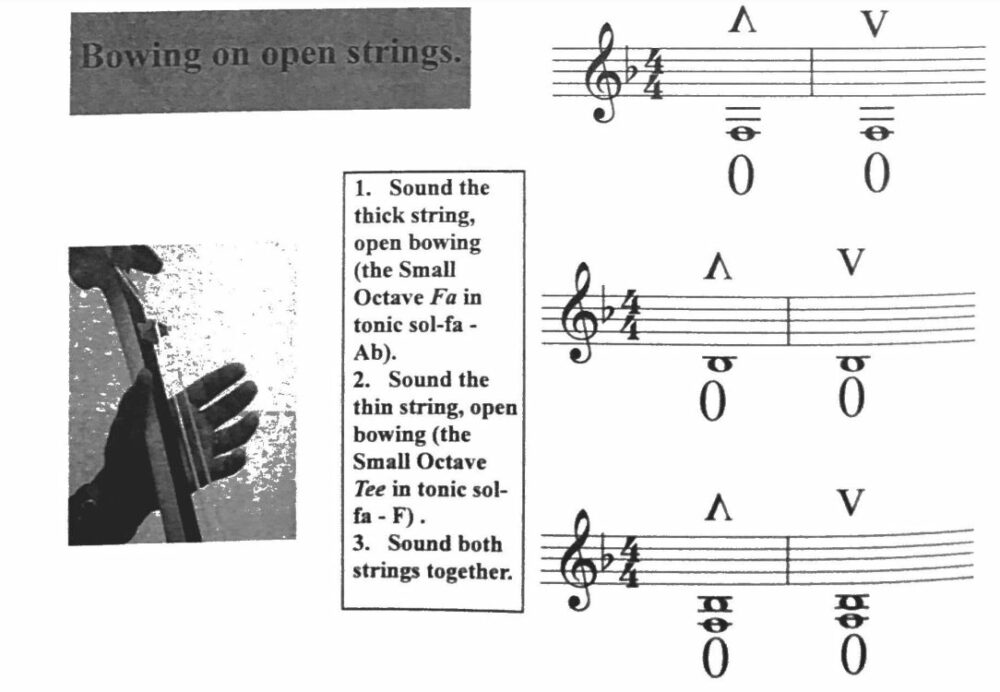
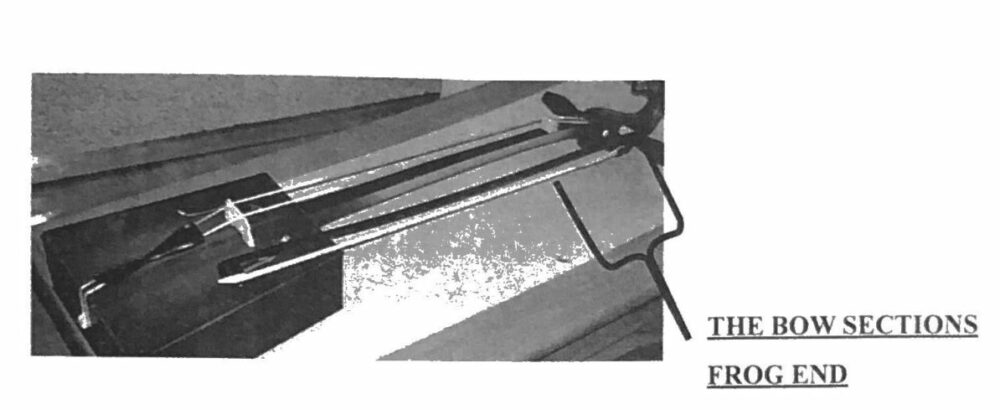

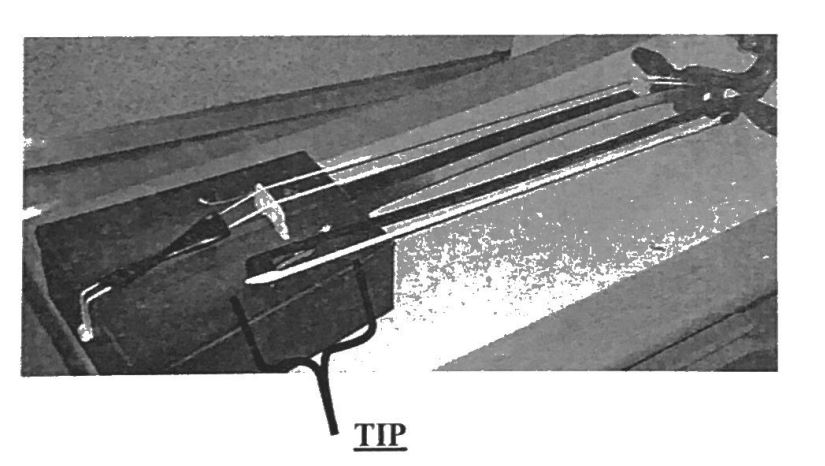
The most important basic in leaning the morin khuur is the ability to produce a regular, consistent, pure, even and “unbent” note with the bow. You need to achieve the correct timbre. The “unbent” sound should be produced evenly along the whole length of the bowing action. The pressure you exert with the frog end of the bow should increase as you draw the bow across the string, so that when you reach the tip of the bow, you are using more force. The change in pressure should not be much, but the sound will then be even and consistent.
The most efficient part of the bow to use when producing shorter notes is in the middle.
Scale Exercises
It is very important for your left hand fingers to be able to touch exactly the right place on the strings so that you play every note in perfect tune. The fingering system on the morin khuur is probably different to other instruments you may have played, so lots of practice is essential, no matter how boring that may be! Just as with every instrument anyone has invented, practice makes perfect – so you have to practice so that you find the right note at the right time every time!
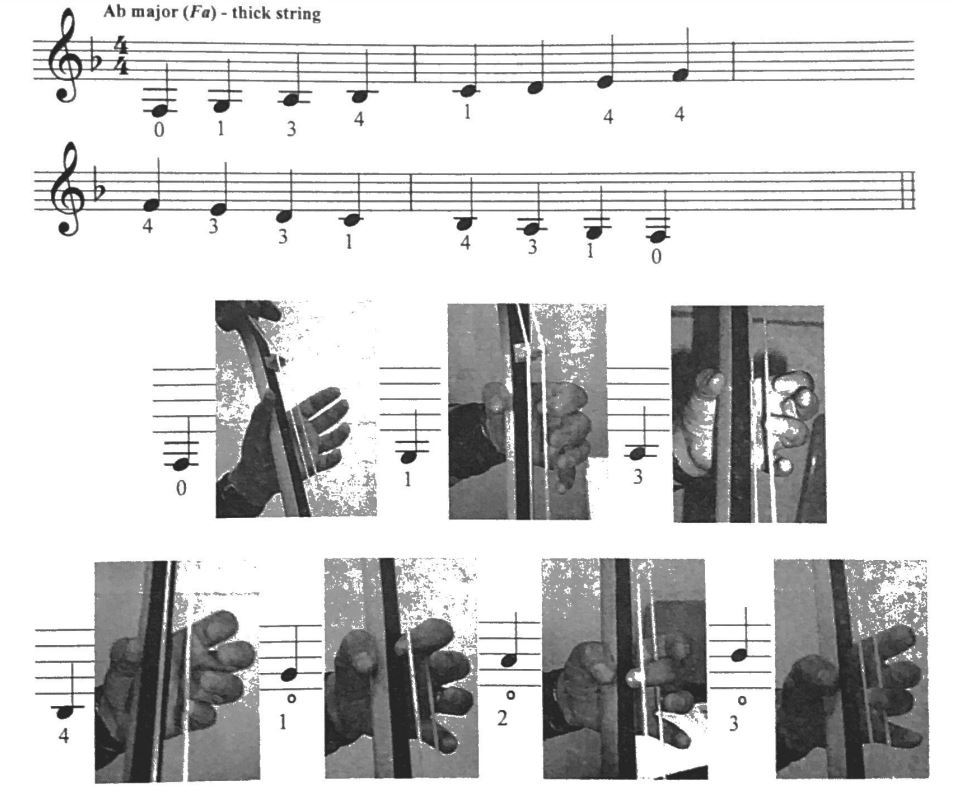


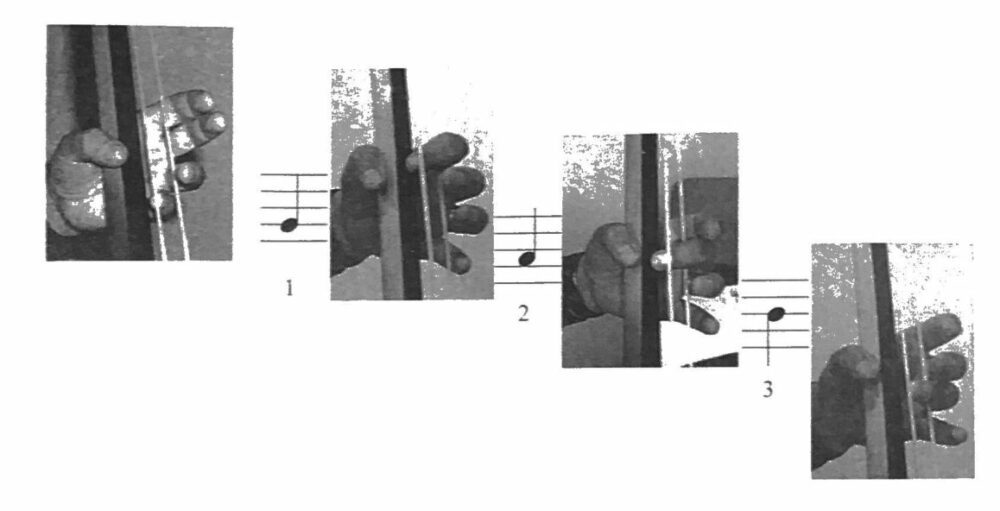
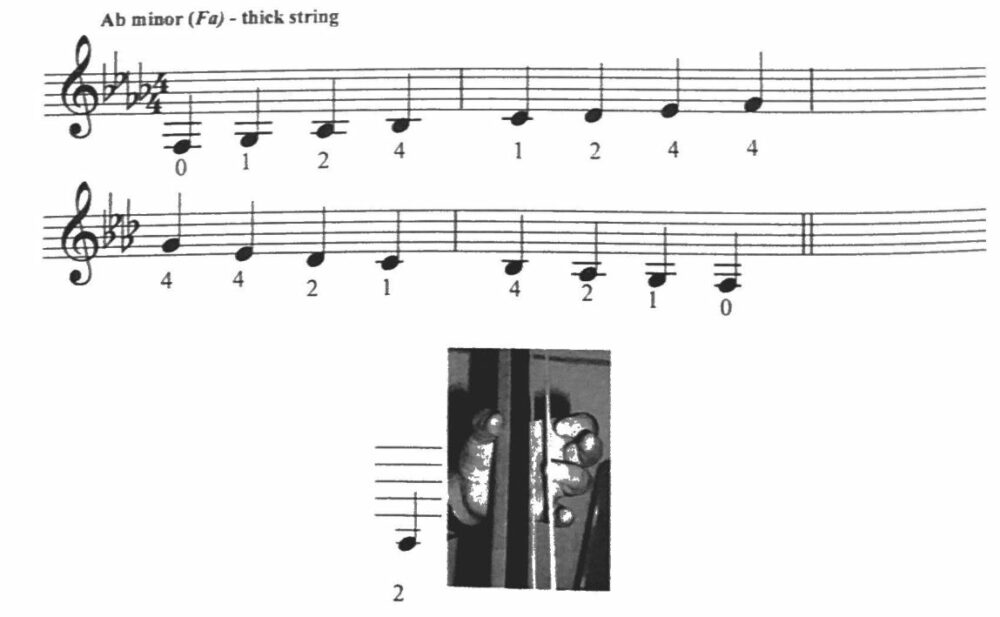
Mongolian Traditional Song
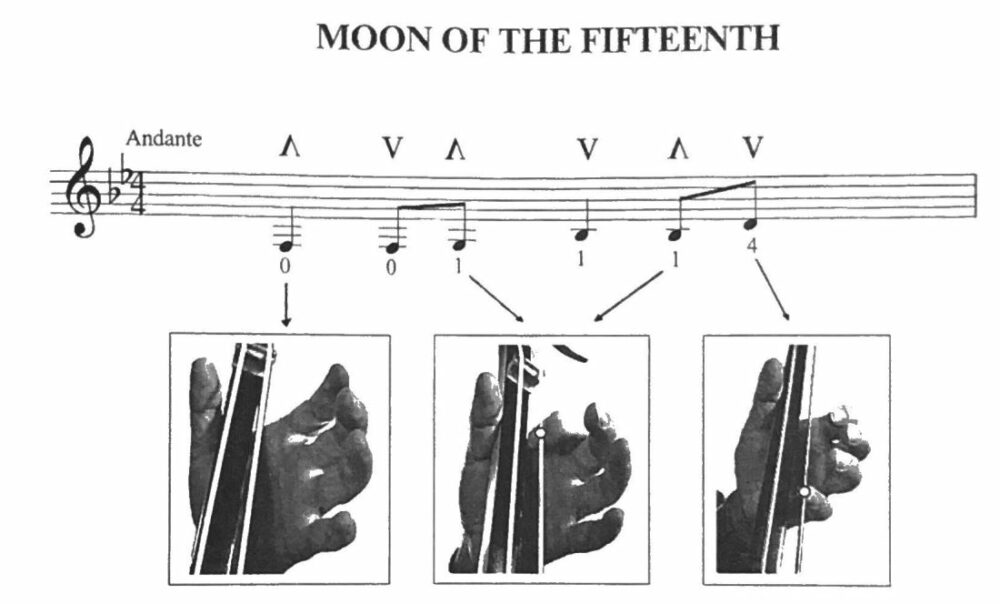
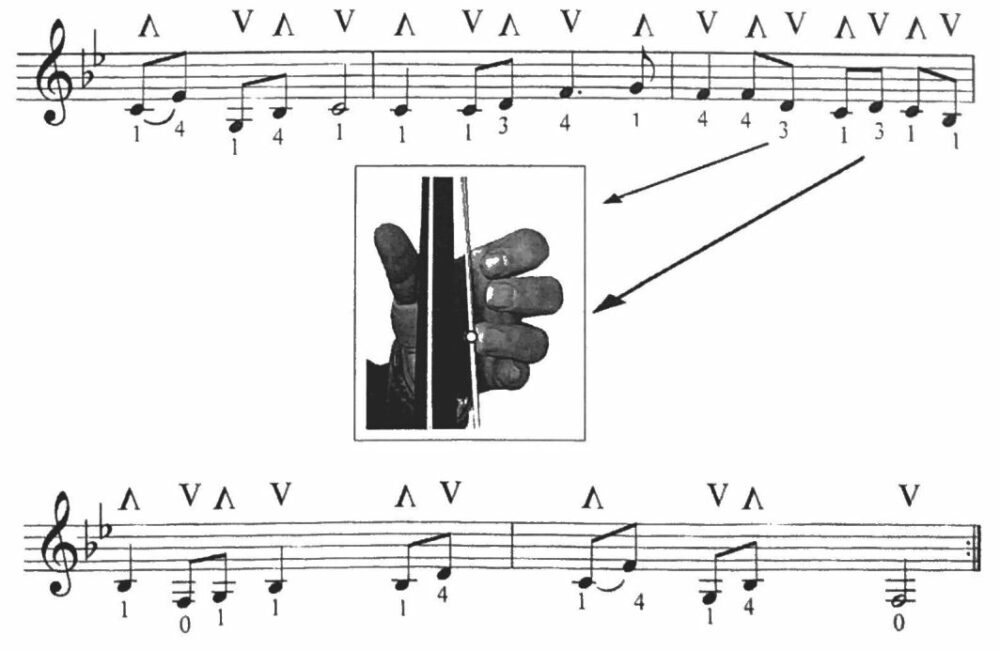
Twinkle Twinkle Little Star
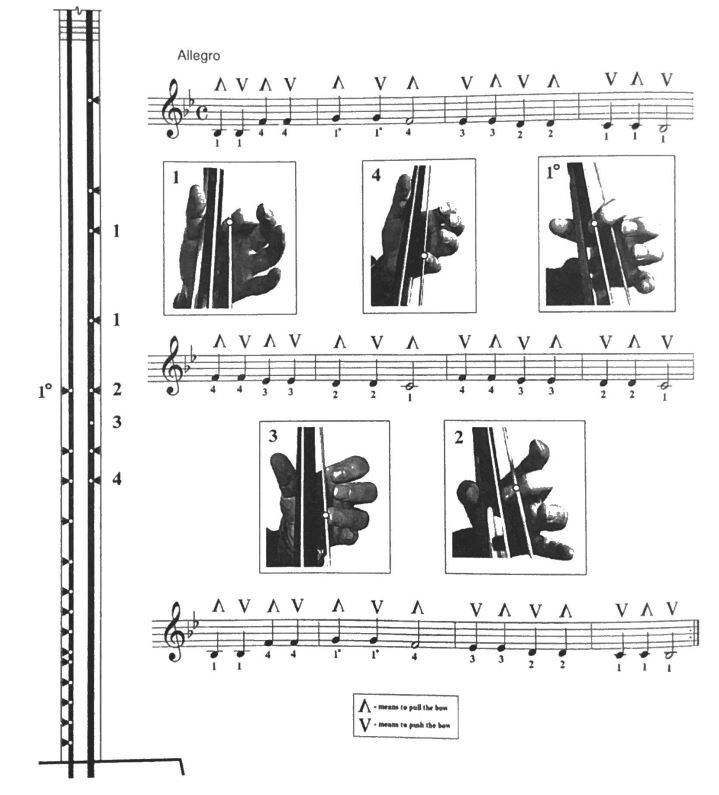
Most ordinary morin khuur players restrict themselves mostly to the 1st and 2nd Octaves. This calls for use of all the fingers without great difficulty. The 3rd Octave is more difficult. Because it is high up on the neck of the morin khuur, the distance between each note is very small, exact placement becomes critical and slight mistakes are much more obvious – and painful to the ear! The fingers must go under the thick string to reach the thin string for the 3rd Octave.
Doh is played by the nail of the 2nd finger.
Re is played with the tip of the 3rd finger.
Mi and all the next notes are played by the tip of the little finger.
In the further, you should learn to play with the thumb. One of the traditional methods of playing morin khuur is playing “ZEE” position with the thumb. The thumb pushing the thin string plays the role in sound lowering and highering of the thin string and making multiple sound of various ornamentation and rhythm.
For example: This position of pushing the 1-line octave “Fa” note by the thumb and the little finger in the center of the morin khuur neck.
Ten Fingers of the Hands
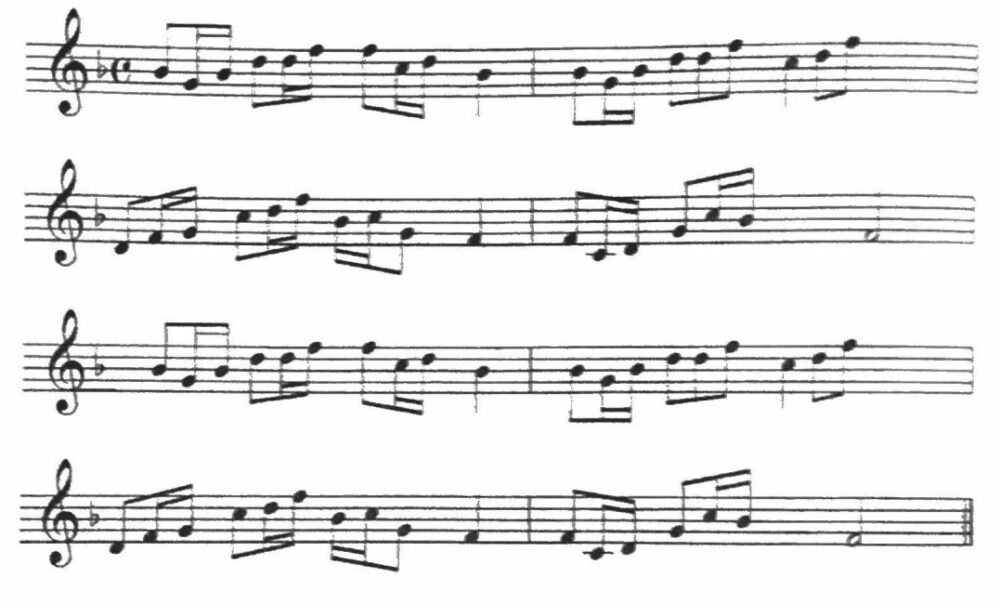
Little Sharga(Horse)
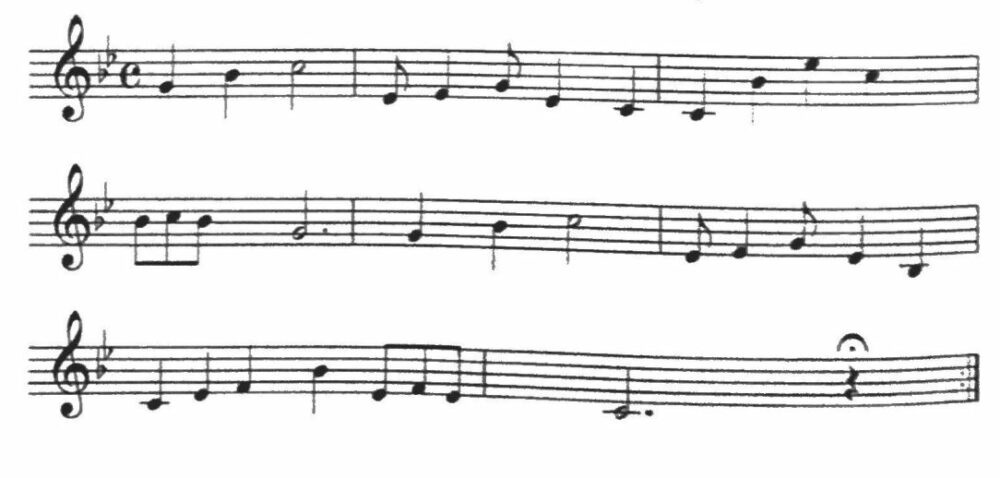
Grass in the Ditch
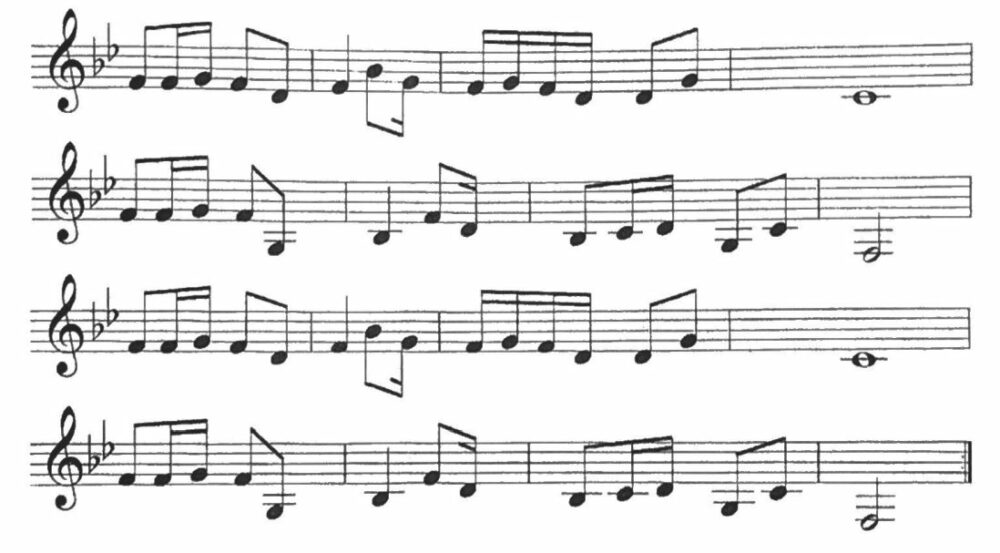
Rising Sun
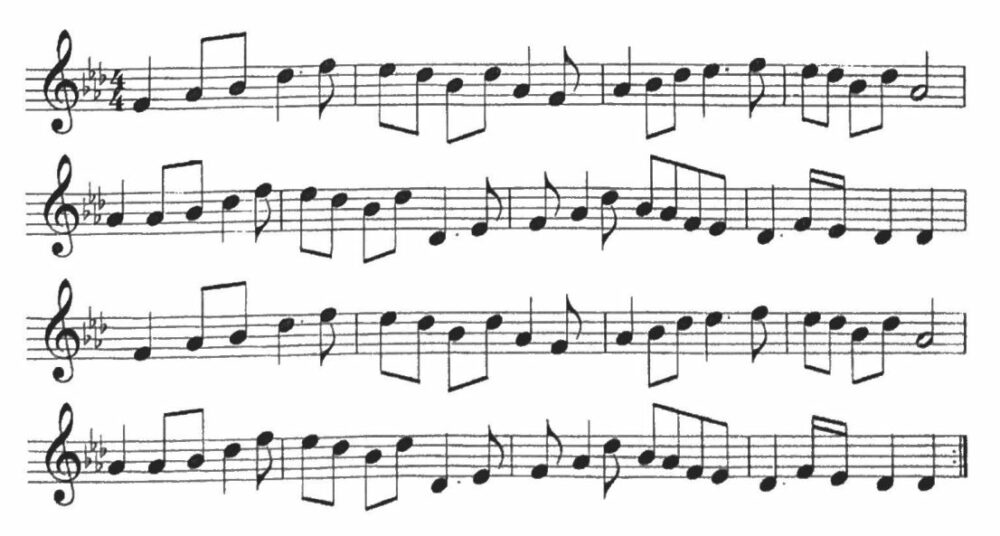

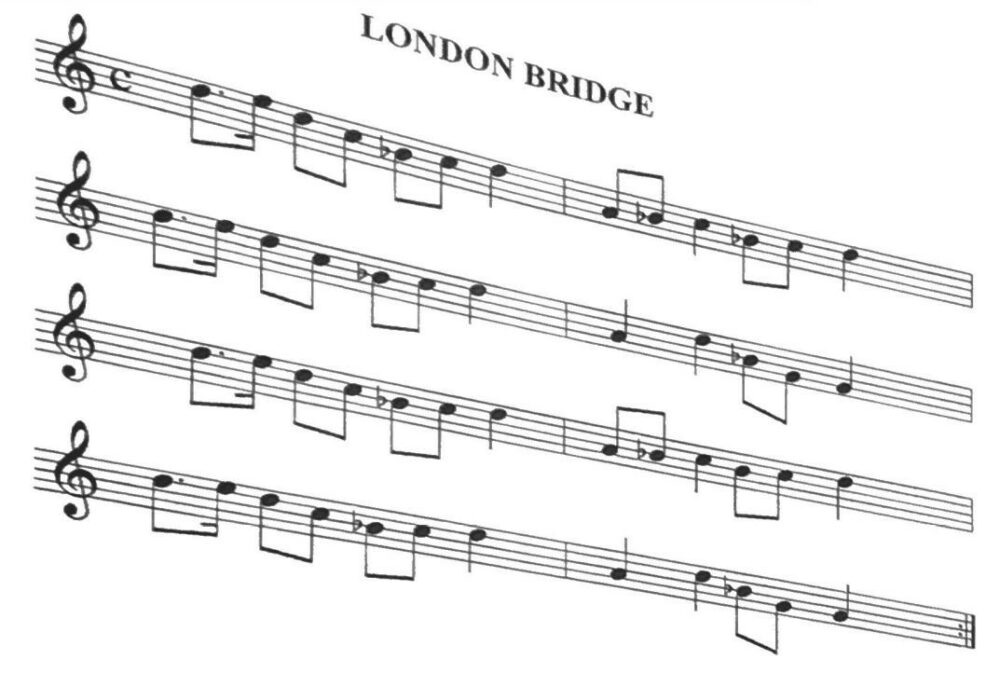
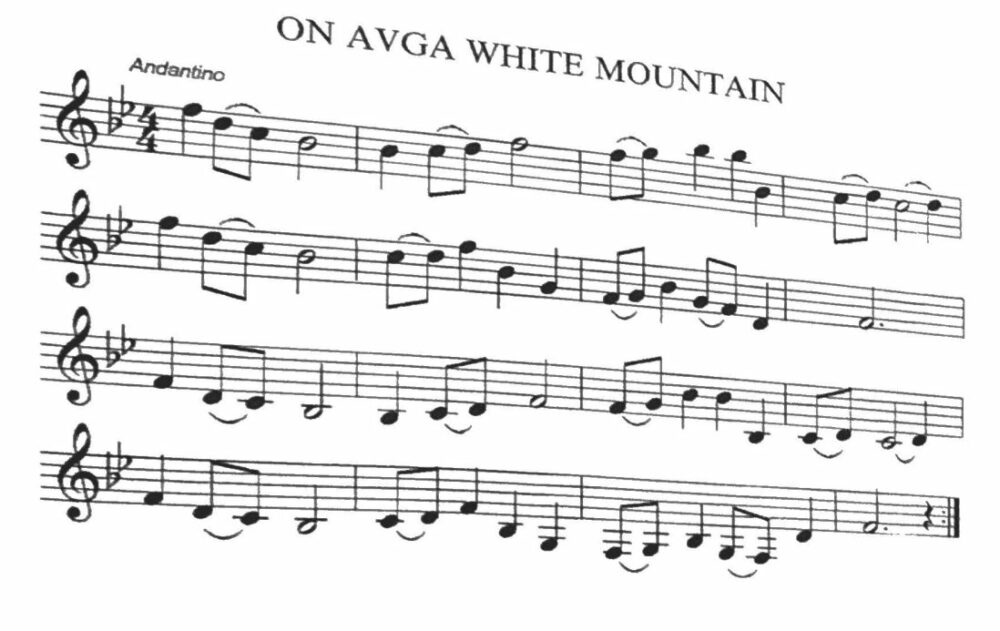
An Extreme Character
Despite the translation above of the title of this traditional Mongolian song, it expresses a much less extreme, more gentle pleasure!
